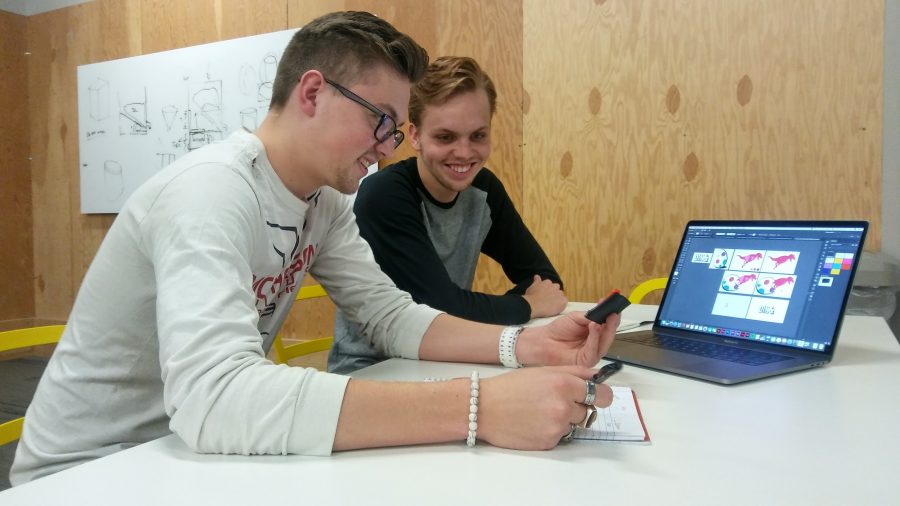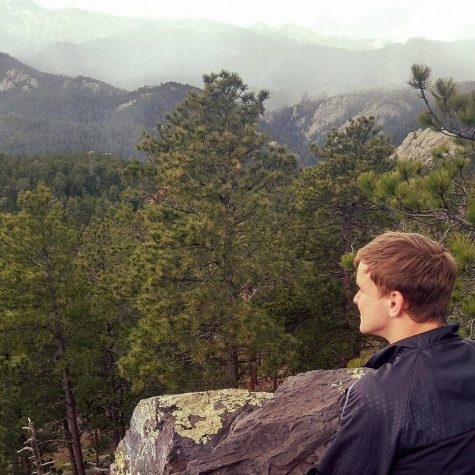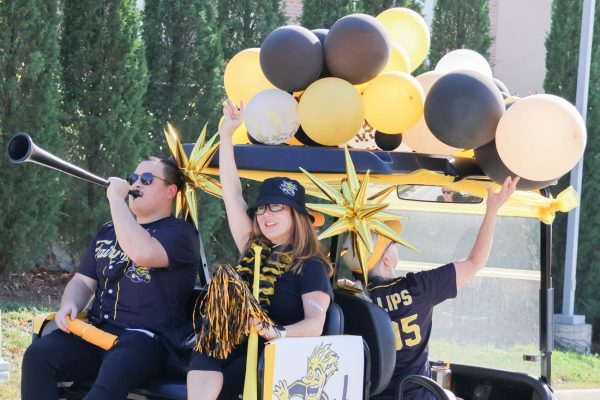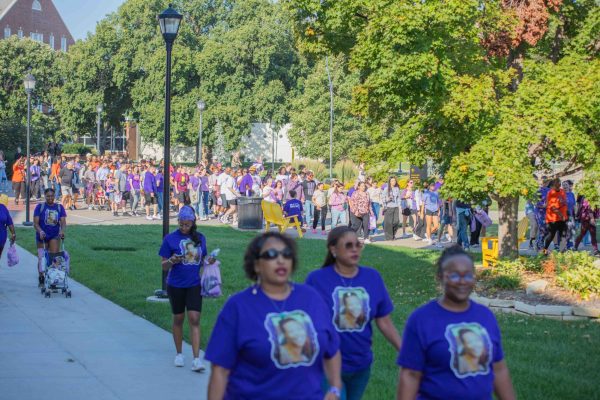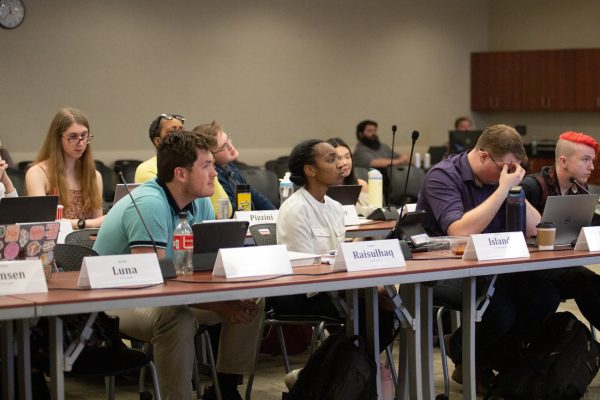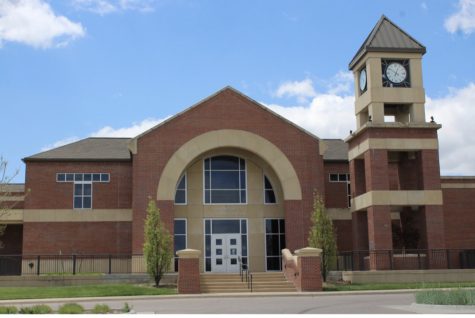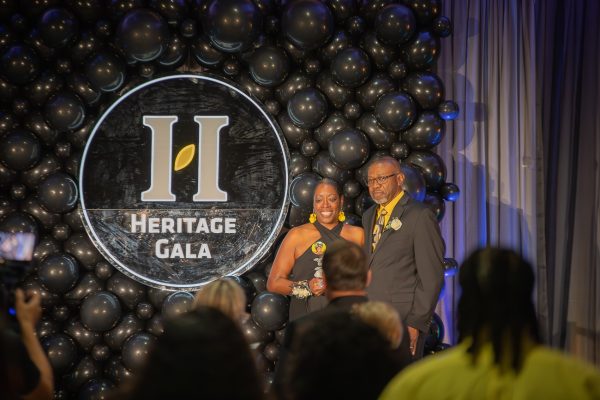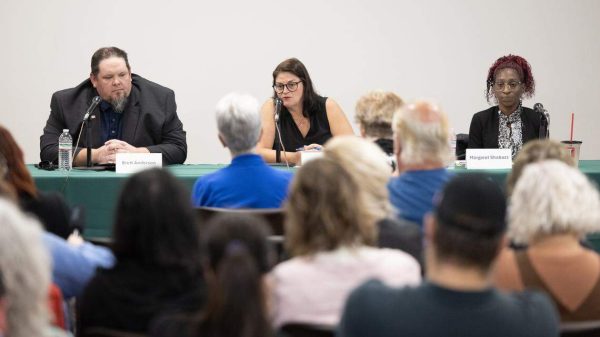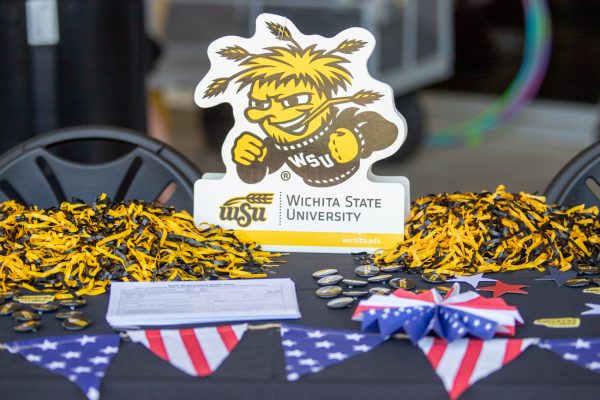Cracking the code
Students hatch wearable coding device
Photo by Sam Belsan Freshmen Spencer Steinert (left) and Jared Goering are working on a new coding device designed for children. Children will build and code the wearable device themsevles.
Two Wichita State students are working on new technology to assist with spreading a love for coding and computer programming amongst kids.
Jared Goering and Spencer Steinert, freshmen in the Master of Innovation Design (MID) program, have been developing a new device, named “Dino,” which allows children to experience computer science education outside of the classroom.
“Dino is an educational wearable for kids,” Steinert said. “The idea is that the kids will build and code the device themselves, so it will give them the experience and knowledge in programming and biometrics.”
The device’s design is consistent with its name. It will be a wristband with interchangeable dinosaur egg-like pieces to make the device functional.
“It’ll have egg-looking modules and each one of those will be components that make an electric circuit throughout the entire wristband,” Steinert said.
Goering described Dino as a combination of Lego Mindstorm pieces and an Apple Watch. The design allows for continual improvement by adding components if needed.
Dino will use sensors in the wristband to engage the user in interactive learning.
“At first, we’ll be just concentrating on motion tracking, so using an accelerometer or a sensor,” Goering said. “The device would go out to a phone, tablet or computer where the curriculum would allow kids to code games and basically be the controller using their wristband.”
Steinert and Goering recruited a couple other people to help develop Dino including Resha Parajuli, a first year MID student.
Parajuli joined the team after learning about the idea through a prototype design class.
“With my own background as a STEM/STEAM education enthusiast and artist, I love the idea of science and art being together for interactive learning,” Parajuli said. “I was already interested in doing something like that myself, but in the end we were taking a class about prototype design which kind of enabled us to really end up working together.”
Parajuli is developing the software side of the device, the curriculum. She said she realizes Dino needs to go beyond the simple learn-and-remember standard often taught.
“I am working on creating interactive curriculum for the actual Dino bracelet and modules,” Parajuli said. “We have to figure out a way for the kids to actually engage in it. We want to be able to leave it open-ended so kids can explore and have a low threshold, high ceiling.”
The idea behind Dino has been percolating in Goering and Steinert’s minds for the past 12 years they’ve known each other, Goering noted.
“This is something we’ve been wanting to work on for a long time,” Goering said. “Most of our learning was outside of school. We didn’t have a whole lot of value in the education we were getting at times, so we always wanted to bring that system up to date.”
Steinert said Dino’s purpose is to support the education system by providing something for the students to work on outside of the school day.
“[Our goal] is not to undermine schooling at all because it’s obviously important,” Steinert said. “The idea is that we can bring the knowledge to the children, to the kids, without having to go through the school and a certain amount of time to implement it into curriculum.”
Dino was entered into the Ozy Awards and Goering and Steinert will learn about the results of the competition in the middle of March. They also plan to enter the device into the Shocker New Venture Competition next month.
The next steps for Dino are curriculum development and gathering market feedback for the product.
“The development of the hardware shouldn’t be complicated. That’ll be the last 2 percent of the product,” Steinert said.



